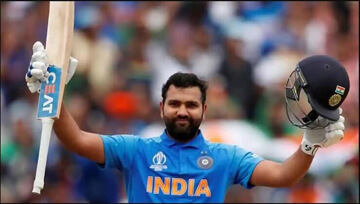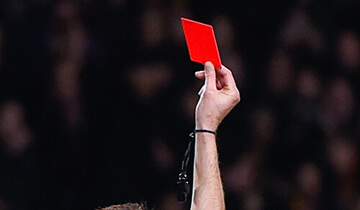Soccer, also known as football, is the most played and watched sport in the world. The global popularity of soccer is largely attributed to the simplicity of the game - two teams compete to score the most goals by putting the ball into the opponent’s net. Yet within this simplicity lies intricate rules and positions that regulate gameplay between the two teams of 11 players each.
The Players
A regulation soccer team has 11 players on the field at any one time. The 11 players are assigned to specific positions:
Goalkeeper
- The goalkeeper is responsible for preventing the opposing team from scoring by catching, punching or deflecting the ball away from the net. The goalie is the only player allowed to use their hands and arms on the field.
Defenders
- Defenders work to prevent the opposing team from advancing down the field and to regain possession of the ball. Defender positions include center backs, full backs and sweepers.
Midfielders
- Midfielders play both an offensive and defensive role. They advance the ball down the field by dribbling and passing but also fall back to help defend when not in control of the ball. Common midfielder positions are defensive, central and attacking midfielders.
Forwards
- Forwards play in front of the rest of the team and are responsible for most of the scoring. The main forward positions are strikers and wingers.
In addition to the starting 11, a full roster consists of substitute players who can replace starting players during a match. The number of substitutes allowed differs by league but is generally around three to five subs. Teams utilize their subs to rest fatigued players, adjust strategies or replace injured players.
Regulations
The rule that soccer be played between two teams of 11 players each is set out by the International Football Association Board and enforced by FIFA, soccer’s international governing body. FIFA’s Laws of the Game mandate that a match cannot start or continue if either team has fewer than 7 players on the field.
The 11 v 11 format has been the foundation of soccer for over a century. Earlier forms of the game in the 1800s were played with varying team sizes. But once the rules coalesced, the 11 players per side standard was set. This number strikes the optimal balance between allowing a diversity of positions and strategies while still enabling crisp teamwork and coordination between players.
While recreational and youth soccer are sometimes played with fewer players, professional 11 v 11 play mandates roles and gameplay not possible with smaller teams. The key positions and responsibilities required for intricate passing plays, attacks and set pieces are only achievable with 11 players working in harmony on the field.
So whether you’re playing or watching, now you know why you’ll always see exactly 11 players on a side battling it out during a soccer match. The 11 v 11 format provides the essential framework for the sport’s enduring success.
The Soccer Field
Soccer is played on a rectangular field called a pitch that is covered in grass or artificial turf. The dimensions and markings of a regulation soccer pitch are precisely defined by the Laws of the Game. These specifications allow for standardized fields worldwide that enable fair and consistent gameplay.
Pitch Dimensions
For international matches, the length of the field must be between 100-130 yards (90-120 meters), and the width must be between 50-100 yards (45-90 meters). Clubs at lower levels of play may have smaller pitches with reduced dimensions.
The touchlines run the length of the field along the sides, while the goal lines stretch along the width at either end. A halfway line divides the field into two equal halves. The center mark indicates the middle of the pitch.
Field Markings
A soccer field has clear visual markings that delineate sections of the playing area. These include:
Center Circle
- A circular marking with a 10-yard radius around the center mark. It defines where kickoffs can take place to start play.
Goal Area
- An area extending six yards from each goal post and six yards into the field of play. Only the goalkeeper can handle the ball inside this area.
Penalty Area
- Larger rectangular area, 18 yards from the goal posts, where penalties are taken. Also known as the “18-yard box.”
Corner Arc
- Quarter-circles with one-yard radii at each corner of the field used to mark corner kicks.
Other field markings include the penalty mark, penalty arc, and optional markings for retreat lines on free kicks. The distinctive linespainted on a soccer pitch are universally recognizable symbols of the beautiful game.
Standardized Dimensions
The standardized field dimensions, along with goal size and ball specifications, provide crucial equipment consistency. Players can hone their skills and teams can develop tactics knowing the conditions will be uniform from one match to the next.
So whether it’s a World Cup final in a huge stadium or a recreational game at a local park, the field markings and layout remain fundamentally the same. The iconic soccer pitch allows players around the world to share in the enjoyment of the most popular sport on the planet.
Number of Players in Soccer
Soccer is a team sport contested between two sides, with strict rules governing the number of players allowed on each team. Official soccer matches are played 11 versus 11, with substitutions permitted under certain guidelines.
The Teams
According to the official Laws of the Game set forth by the International Football Association Board, soccer is played between two teams, with each fielding no more than 11 players at a time. This includes 10 outfield players and 1 designated goalkeeper.
The 11 players work together as a unit, with each position and role supporting the team’s tactics and strategy. Common positions include strikers, midfielders, defenders, wings, and goalkeeper.
Number of Substitutes
In addition to the 11 starting players, teams can have substitute players who sit on the bench and can enter the game in exchange for a starting player.
The number of allowed substitutes differs by league and competition. Most professional matches permit 3 substitutes per team, while youth and amateur matches may allow more.
No more than 3 replacements can be used in a standard 90-minute match. Additional substitutes are permitted if a game goes into extra time. Any substitute who enters the game cannot be replaced by another sub later.
Substitution Rules
Substitutions are governed by specific rules:
-
They can only enter at stoppages approved by the referee.
-
Players must exit and enter at the halfway line after being waved on by the referee.
-
Substitutes must be equipped and ready to enter before the request is made.
The ability to use tactical substitutions opens up strategy for managers and coaches, allowing fresh legs when needed or shake-ups to formation and style of play. But the limit of 3 subs requires judicious use of replacements.
11 vs 11 with Flexible Subs
The standard 11 vs 11 player format with a cap of 3 substitutes per team has been a staple of soccer for generations. The set number of players promotes the free-flowing, fast-paced style that makes soccer the beautiful game. Strategic use of substitutes also adds intrigue and dynamism to matches.
Player Positions in Soccer
In the game of soccer, each team fields 11 players at a time, with each player occupying a specific position on the field. The positions are closely linked to the roles and responsibilities assigned to players in that spot on the team. There is an articulated structure to how the 11 players are deployed on a soccer pitch.
The Goalkeeper
The goalkeeper, also called the goalie or keeper, is essentially the last line of defense between the opponent and the goal. Goalies are allowed to use their hands and arms to catch, deflect or punch the ball away from the goal. They organize the defense and guard the net.
Defenders
Defenders focus on preventing the other team from advancing downfield and scoring. They tackle opposing players to regain possession. There are typically four defenders:
Center Backs
- Two defenders in the middle of the defense, in front of the goalie.
Full Backs
- Defenders on the left and right sides, who both defend and move upfield to support attacks.
Midfielders
The engine room of the team, midfield players transition between attacking and defensive phases. Midfielders possess all-around skills. There are commonly four midfield positions:
Defensive Midfielder
- Focuses on protecting the defense and stopping opponent attacks.
Central Midfielder
- Controls the tempo in the center of the pitch with passing and ball movement.
Attacking Midfielder
- Supports the attack with adept passing, dribbling and shooting skills.
Forwards
Forwards play up front and spearhead the attack. They have excellent shooting abilities and speed. The two main forward positions are:
Center Forward/Striker
- The main attacking threat, tasked with scoring goals.
Wingers
- Forwards playing on the left and right sides, responsible for crosses, passes and shots.
The structured layout allows each player to focus on their specialized role. But fluidity among positions and tactical adjustments are also key parts of soccer strategy.
Scoring Goals in Soccer
The object of soccer is simple - score more goals than the opposing team by getting the ball into the net to earn points. Goals serve as the culminating act that drive the action, excitement and strategy of the beautiful game.
The Aim of the Game
According to the official Laws of the Game, the purpose of a soccer match is to score more goals than the other team over the course of 90 minutes of regulation play. Other sports award points through various means, but in soccer the goal reigns supreme.
Goals can only be attained by putting the ball over the goal line between the posts and under the crossbar. The team with the most goals at the end of the match wins. If the score is tied, then a draw results.
How Goals are Scored
For a legal goal to be awarded, the entire ball must fully cross over the goal line that runs between the goal posts and under the crossbar. If any part of the ball fails to break the plane of the goal line, then no goal is counted.
Goals can only be scored with the feet or head. Using the hands or arms to direct the ball into the goal constitutes a handball violation. The one exception is throw-ins taken by the goalkeeper from inside their penalty area.
Goal scoring generally occurs from:
Shots
- Kicked, half-volleyed or headed into the net.
Penalty Kicks
- Direct free shots from 12 yards out awarded for fouls inside the penalty area.
Own Goals
- Errant deflections into a team’s own net.
Goals are celebrated with cheers, chants, hugs and fist pumps in recognition of their significance. In the quest for victory, no achievement is more prized on the soccer pitch than firing the ball into the back of the net.
Rules and Fouls in Soccer
Soccer is governed by 17 official rules that all players must abide by. Violating these rules through fouls and misconducts can result in free kicks, penalty kicks, yellow/red cards and more against the offending team.
Laws of the Game
The rules of soccer are defined by the International Football Association Board (IFAB) in the publication “Laws of the Game.” These 17 foundational rules cover equipment, field, players, gameplay, fouls, and governance of the sport.
The rules standardize soccer around the concepts of fair play and flowing action. Referees enforce these laws equitably across all matches.
Common Fouls
Some frequent fouls that referees watch for include:
- Handling - Illegally touching the ball with the hand or arm.
- Tripping - Intentionally tripping or attempting to trip an opponent with the legs.
- Pushing - Forcefully pushing an opponent away from the ball.
- Dangerous Tackles - Slide tackling in a reckless manner that endangers a player.
- Obstruction - Blocking an opponent from reaching the ball when not playing it.
- Offsides - Entering the attack from an offside position on the field.
Foul Penalties
Depending on the type and severity, fouls are punished with:
Direct Free Kicks
- For major fouls like tripping, kicking, handballs, etc. Allow a direct shot at the goal.
Indirect Free Kicks
- For less severe fouls. Must touch another player before going into the goal.
Yellow/Red Cards
- Cautions and ejections for misconduct and fouls.
Penalty Kicks
- Taken from 12 yards out for fouls inside the penalty area.
Strict enforcement of the rules allows soccer to flow freely while penalizing illegal play. Familiarity with the Laws of the Game and common fouls is key for players, coaches, referees and fans alike.
Soccer Officials - Referees, Linesmen and VAR
Soccer matches are overseen by officials on the field and video assistants who enforce rules, control gameplay, and ensure fair competition. Referees, linesmen and Video Assistant Referees (VAR) each play crucial roles.
The Referee
The head official in a soccer game is the referee. The referee has full authority to enforce the Laws of the Game and make critical decisions during the match.
Key referee duties include:
- Starting play, stopping it for fouls/injuries, and ending each period.
- Calling fouls and issuing disciplinary actions like cards.
- Positioning themselves for the best viewpoint on the field.
- Communicating decisions with players, coaches and other officials.
Linesmen
Linesmen (also called assistant referees) work along the touchlines assisting the referee. Two linesmen operate on opposite sides of the field.
Responsibilities of the linesmen include:
- Signaling when the ball leaves play by crossing the touchline or goal line.
- Indicating offside infractions when attacking players enter illegally.
- Providing input to the referee on fouls and misconducts.
Video Assistant Referee (VAR)
VAR involves a video review system and dedicated assistant referees who monitor replays of critical situations like goals, penalties and red cards. The VAR team communicates with the referee when video evidence indicates a “clear and obvious error” that should be overturned.
The team of impartial soccer officials ensures fair games are decided solely on the players’ performances according to the rules. On-field referees and VAR work together to provide efficient and accurate enforcement of the Laws of the Game.
Conclusion
In conclusion, the global sport of soccer has a well-defined structure that allows it to be played fairly and competitively around the world. Matches are played between two teams of 11 players, each with specialized roles on the field. Goals serve as the objective, scored by legally putting the ball into the net. Rules govern conduct, enforced by the referees and their assistants. The articulated elements of soccer come together to create captivating matches and enable the game to thrive as Earth’s most popular sport. While simple at its core, soccer has nuances and intricacies that provide its billions of fans with endless entertainment.







































